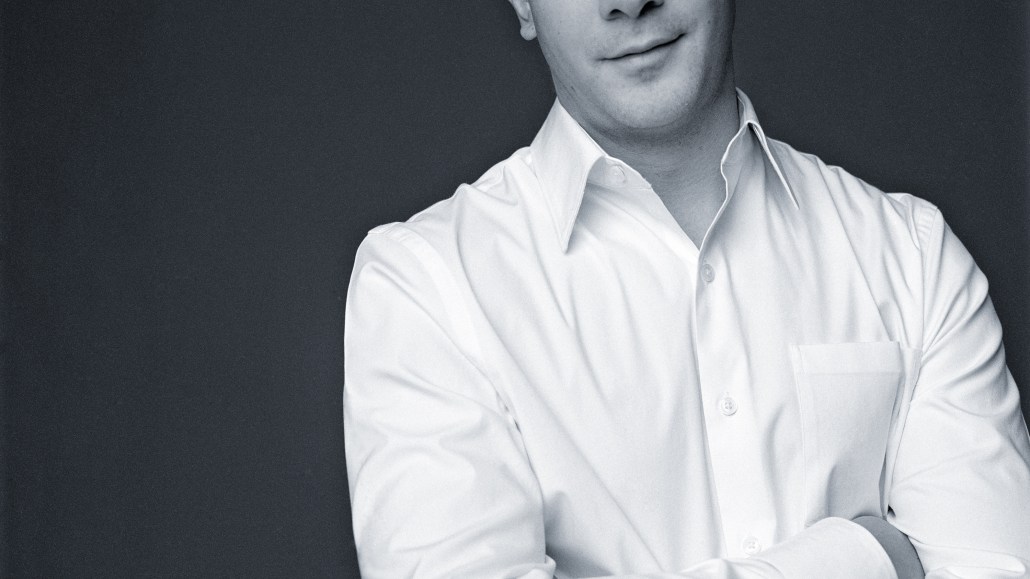
Andrew Essex, CEO of creative agency Droga5, isn’t an ad agency lifer. In fact, he’s only been in the business for six years. Essex, who was an executive in publishing at The New Yorker, Details and Entertainment Weekly, joined up with well-known advertising creative David Droga to launch the independent shop in 2006. The agency has produced well-regarded work such as “Tap Project” for UNICEF and “The Great Schlep” viral campaign for the Obama presidential campaign. Essex spoke to Digiday about the fundamental challenge of the age of media abundance, why the digital-traditional divide is silly and the notion of Facebook buying Conde Nast. (Disclosure: My girlfriend works at Droga5.)
What’s the biggest challenge facing the agency business now?
An economy of unprecedented abundance. There’s too much of everything. Atomization is the right word. There are too many channels, too much stuff. There’s more content than anyone can possibly consume, which creates a Darwinian paradox. It’s a binary win-or-lose model in which good stuff enjoys exponential success because it’s turbocharged with social media and bad stuff dies quick and painful deaths.
Is interruptive advertising going away?
I think it is going away. Anything interruptive can’t go away instantly but everyone would like it go away. It’s easier than ever to avoid. I don’t think anyone is doing any favors by interrupting without permission. It presumes you’re watching appointment TV. From a predictive model those numbers are going down. Most people I know don’t watch it on an appointment level. Even my parents don’t if you take out sporting events and real-time events like the Grammys.
So is there a war to earn attention then?
There’s a complete war for attention. There’s more stuff than anyone can be attentive to. Every moment of attention is precious. I can’t pay attention to all the content on my iPad. What makes people think they’ll pat attention to something that’s secondary? It’s a process that’s taking place as people’s attention spans fundamentally change. Emerging platforms allow people to pay attention in different ways. It requires us to ask if anyone will care or see this. These are important questions.
How do you assess the state of digital creativity?
I don’t make that division. It’s just creativity. We’ll stop using that word [digital]. It will be part of the canvas. When TV becomes digital, when do we stop calling it traditional? I implore people to use different terminology. Inevitably the divide will disappear. When you have interactive TV, what does that make the medium? This is just a few quarters away; it’s not a few years.
Do you think of new technology platforms like Facebook as media companies?
They’re clearly in the media business. When Facebook buys Conde Nast it will be a natural evolution in the order of things. Don’t be surprised. Everyone is in the content business and the eyeball business. They have incredible distribution but they don’t have ultimately premium content. They can burnish their distribution and analytical firepower.
More in Marketing

Why the New York Times is forging connections with gamers as it diversifies its audience
The New York Times is not becoming a gaming company. But as it continues to diversify its editorial offerings for the digital era, the Times has embraced puzzle gamers as one of its core captive audiences, and it is taking ample advantage of its advantageous positioning in the space in 2024.

Why B2B marketers are advertising more like consumer brands to break through a crowded marketplace
Today’s marketing landscape is more fragmented than ever. Like consumer brands, business brands are looking to stand out in a crowded and competitive marketplace, making marketing tactics like streaming ads, influencers and humorous spots more appealing.

As draft puts WNBA in spotlight, the NBA is speeding up ballplayers’ transition to creators
The NBA’s star athletes are its greatest marketing asset.





